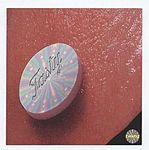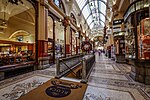APA Building, Melbourne

The APA Building was a Victorian "skyscraper" in Melbourne, Victoria, Australia; at 12 storeys and 53m to the tip of its corner spire, it was the tallest commercial building in Australia at the time of its construction in 1888–9, later reputed (erroneously) to have been the world's tallest at the time.Originally known as the Australian Building (and also known as the Australian Property Investment Co or API Building), it was located at 49 Elizabeth Street, on the corner of Flinders Lane in Melbourne, and was notable for the way the Queen Anne style design lent it very vertical proportionals, enhanced by the steep roof, spires and gables of the top floors. It was Australia's tallest building until 1912, when it was surpassed by Culwulla Chambers in Sydney, and remained Melbourne's tallest until 1929. The APA Building was demolished in 1980.
Excerpt from the Wikipedia article APA Building, Melbourne (License: CC BY-SA 3.0, Authors, Images).APA Building, Melbourne
Staughton Alley, Melbourne Melbourne
Geographical coordinates (GPS) Address Nearby Places Show on map
Geographical coordinates (GPS)
| Latitude | Longitude |
|---|---|
| N -37.817222222222 ° | E 144.96416666667 ° |
Address
E55 (Fifty Five)
Staughton Alley
3000 Melbourne, Melbourne
Victoria, Australia
Open on Google Maps











